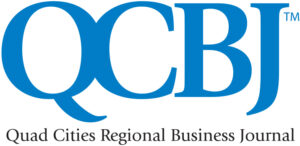The jobless rate for the Quad Cities metropolitan area dropped in July, with the region’s unemployment rate declining from 5.3% in July 2021 to 3.8% in July 2022, the Illinois Department of Employment Security (IDES) reported.
The last time the July rate was equal to or lower than that was in 2019 when it stood at 3.7%.
The unemployment rate also fell in all 14 Illinois metropolitan areas in July.
The Quad Cities was among the metro areas with the largest over-the-year unemployment rate declines, according to preliminary data released recently by the U.S. Bureau of Labor Statistics (BLS) and IDES.
Only the Chicago-Naperville-Arlington Heights and Rockford metro areas saw bigger unemployment rate drops than the Davenport-Moline-Rock Island Metropolitan Statistical Area (MSA).
The Quad Cities MSA also joined the Chicago, Naperville and Arlington Heights MSA in recording the second highest percentage increase in total nonfarm jobs. The Quad Cities area added 8,600 non-farm jobs – an increase of 4.8% year over year. Rockford boasted a 5.5% increase and added 7,600 new jobs.
The Quad Cities sectors recording the largest payroll gains over last year were:
- +3,200 jobs, Leisure-Hospitality.
- +2,200 jobs, Professional-Business Services.
- +1,500 jobs, Manufacturing.
- +1,200 jobs, Government.
- +1,100 jobs, Retail Trade.
Here are unemployment rates and over-the-year changes around the Illinois Quad Cities region:
Counties:
- Rock Island: 4.3%, down 1%.
- Henry: 4.1%, down 0.5%.
- Mercer: 3.5%, down 1%.
Cities
- Moline: 4.2%, down 0.9%
- Rock Island: 4.5%, down 1.4%
- Galesburg: 6.1%, down 0.9%.
The July data “ is an indication that economic recovery is taking place throughout the state,” Deputy Gov. Andy Manar said in a news release. “As unemployment rates continue to decline and jobs increase, IDES is committed to providing training and employment services with its local partners to connect workers and employers together in the Illinois workforce.”
The unemployment rate identifies those who are out of work and seeking employment. Those who have exhausted benefits or are ineligible are reflected in the unemployment rate if they are actively seeking work.




